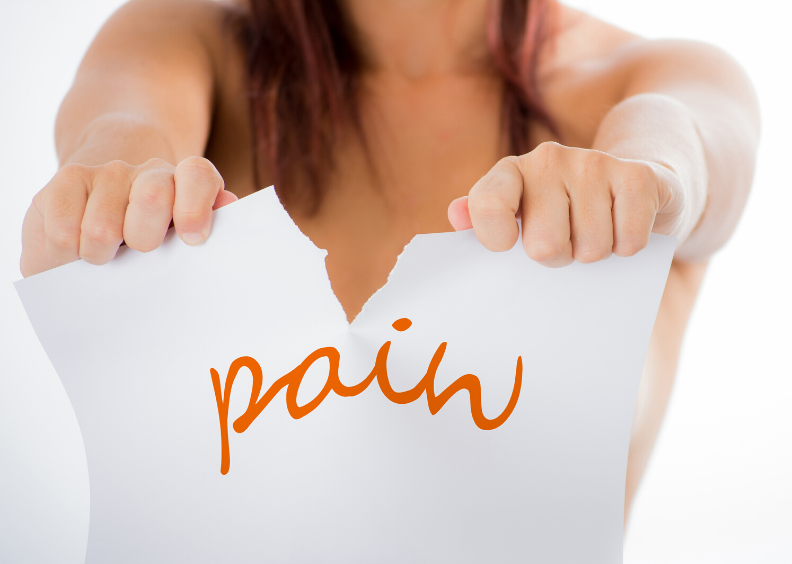What is Pain?
Pain seems like a simple concept externally – you stub your toe and it hurts. Simple. But internally the process can be quite elaborate! Pain is an unpleasant sensory and emotional experience in the body associated with actual, or potential tissue damage. Your nervous system is used to convey messages of injury from your body to your brain, and messages of pain from your brain to your body. Acute pain is a necessary survival mechanism – it is your bodies way of warning you of tissue damage and it teaches you to avoid further tissue damage. Chronic pain often involves more complex origins and functions.
“Acute” pain
Acute pain is the pain many of us have experienced from time to time. We hurt ourselves (cut, pull, strain), experience pain, remove ourselves from the painful situation, heal over time, and the pain goes away. Chronic pain is not in this category.

“Chronic” pain
Many people think that chronic pain means extreme pain. Although chronic pain can be severe, ‘”chronic” actually refers to how long the pain lasts rather than how severe it is.
Chronic or persistent pain is pain that lasts for more than three months, or in many cases, beyond normal healing time. It can be caused by ongoing disease states like arthritis in all its forms, cancer, lupus, multiple sclerosis or any of a myriad of conditions. It can be a consequence of trauma (e.g. surgery, car or work accident, a fall). However it can also be a consequence of a minor injury which leaves you with ongoing pain. It doesn’t obey the same rules as acute pain. Sometimes the long term nature of the pain is not indicative of ongoing disease or damage.
The longer that pain persists, the more complicated it can become. Even if it is caused by a disease, it now involves multiple body systems beyond the nervous system. The endocrine (hormone) system, the gut and other body systems start to become involved.
Chronic Pain can depend on “context”
Chronic pain can be influenced by what is happening in your life at any particular time. Many people have shared stories about how extreme the pain is when dealing with negative situations in life. A classic example is when someone living with chronic pain has difficult dealings with an insurance company – arguments and conflicts tend to make their pain worse. Stress can reduce pain thresholds, and many other “pain/brain” factors can be involved. On the other hand, some people in chronic pain share stories about finding some temporary respite when spending time with good friends and grandkids, having a laugh, or feeling loved and cared about.

What is pain management?
Many people live with chronic pain all day, every day. It is debilitating, exhausting and has an impact on all parts of a person’s life. The pain is in control and can be unpredictable. Living with pain takes courage and strength. There is an ongoing expansion of knowledge and growing evidence that people can use new techniques for “managing” their pain. You can gradually take control of your chronic pain and have the ability to return to meaningful, pleasurable and enjoyable activities in life with a pain reduction. Have a chat to your physiotherapist about managing chronic pain or get in contact with a chronic pain management clinic to help you understand pain and pain management.


